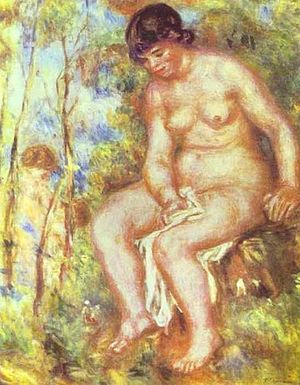by Dean | Oct 21, 2019 | Uncategorized
What does a man in Edwardian England do when his marriage is hopeless? Well, he should not fall in love with another woman. This is what Philip Marshall in The Suspect (1944) does, and his outraged wife, Margaret Hamilton as the Wicked Witch of the West, refuses to give him a divorce. The presence of young Mary, Philip’s love interest, keeps him in town and makes him desperate. Ergo he kills his wife, in a murder plot not exactly believable. Very easily he becomes The Suspect.
This Robert Siodmak film is an Old Hollywood crime story set in Old London. In polished black and white, it isn’t anything important but it is entertaining enough, what with, for one thing, Charles Laughton in the leading part. Rosalind Ivan is good and true as the shrewish wife, and although I regard Ella Raines as perfectly passable as Mary, I wish Universal had hired a Brit, not an American, for the role. Not bloody likely: other women in the film are American too.
(Seen on YouTube)
by Dean | Oct 16, 2019 | General
Directed and scripted by Lewis John Carlino, The Sailor Who Fell From Grace With the Sea (1976), is based on a novel by Japanese writer Yukio Mishima. The homosexual Mishima wrought a book in which he presented 1) sexual longing, and 2) a pack of odd, early teen boys inclined to reject “adult” morality. Connect the dots. In the movie, and probably the book too (I’d have to read it again to be sure), the creation of the boys is all wrong, a silly embarrassment. Then again, the entire film is preposterous, even if it focuses smartly on the extremes of human experience (namely, sex and death) which are integral to Mishima’s vision.
The cast includes Kris Kristofferson, who sleepwalks through his role, and Sarah Miles, who does some marvelously lived-in acting.
by Dean | Oct 14, 2019 | General
In France’s Renoir, released in the U.S. in 2013, the beloved impressionist (played by Michel Bouquet) has his new muse Andree (Christa Theret) pose for him regularly. This she does contentedly until Renoir’s middle son Jean (Vincent Rottiers)—the future film director whose movie The Rules of the Game would artistically rival his father’s best paintings—returns from World War I to Renoir pere’s house. There, Andree, who was an actual person, grows infatuated with Jean; frustrated too. (The year is 1915. Pierre-Auguste Renoir is an old man.) We learn, in point of fact, that Andree eventually acted under the pseudonym of Catherine Hessling in Jean’s silent films.
Directed by Gilles Bourdos, Renoir uses the quiet existence of an elderly painter as an avenue for revealing life’s rich pageant. . . Regrettably, an unexciting, insignificant story develops here (Andree and Jean falling for each other), which prevents the movie from being anything like first-rate. Yet Renoir has an unfolding aesthetic power. Bourdos is good at creating unassumingly alluring shots and scenes, and the cinematography of Mark Ping Bing Lee is a sensuous wonder.
Really, present-day France with its economic troubles, etc. may have driven Bourdos and Company to the Gallic past, when things were so different. Indeed, it is worth mentioning there is enough female nudity in the film to enrage a present-day Muslim immigrant in Paris.
(In French with English subtitles)

Nude (Photo credit: Wikipedia)
by Dean | Oct 12, 2019 | General
Dillinger (1973), the John Milius film, is not much of a movie—for one thing, it doesn’t really care about character—but it is exciting. Gun battles are battles.
The fine Warren Oates plays John Dillinger, and his character isn’t sanitized. Neither is the violence of thuggish felons, or violence in general. A lot of sloppy writing was done, but at least the film is better than Milius’s The Wind and the Lion.
by Dean | Oct 9, 2019 | General
Elaine May‘s 1971 film, A New Leaf, is a misfire, notwithstanding it was butchered through cutting by Paramount Pictures, a company May sued. I’m skeptical of it regardless, though, since some pretty weak May-written comedy dominates the movie’s first few scenes and, several years later, May was willing to direct a movie as fuzzy and unsatisfying as The Heartbreak Kid.
As the concoction goes on, it gets invigoratingly bright and witty, and Walter Matthau does, as John Simon indicated, “a very neat job of humanizing” a wastrel who needs money and chooses to marry for it (and worse). He rightly praises May, a co-star here, for the same kind of humanizing. All the same, A New Leaf is messy. Despite May’s talent, it isn’t nearly as good a comedy as the Harold Lloyd films I’ve reviewed. Old Hollywood, this time, scores over the Seventies.




